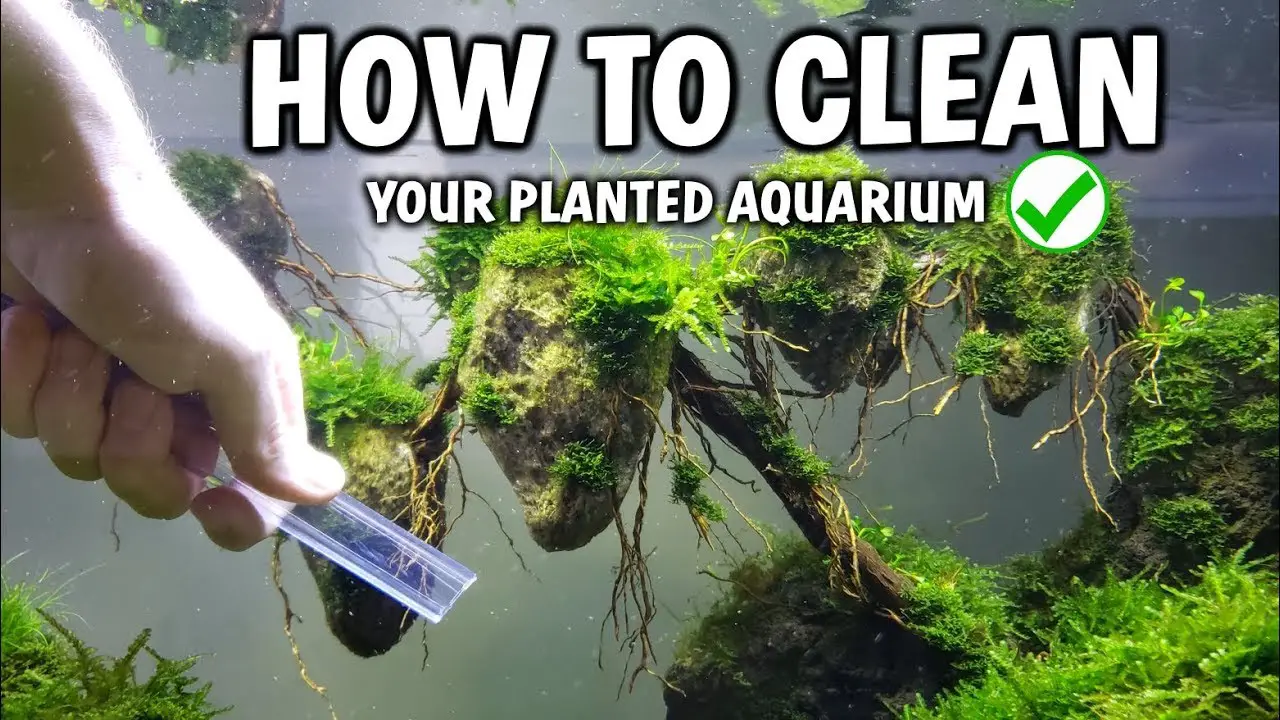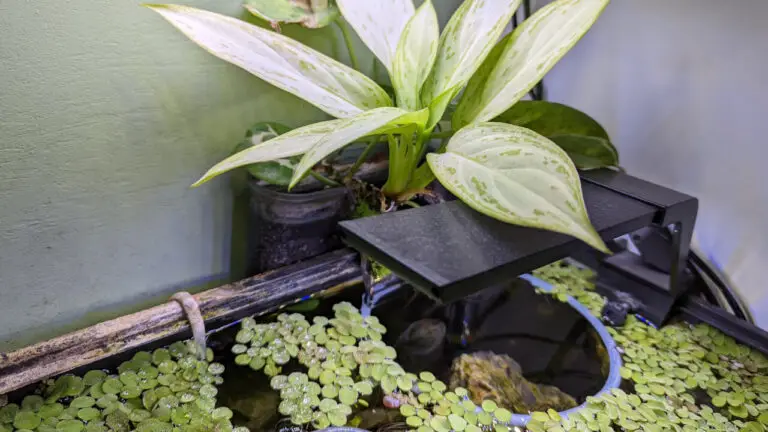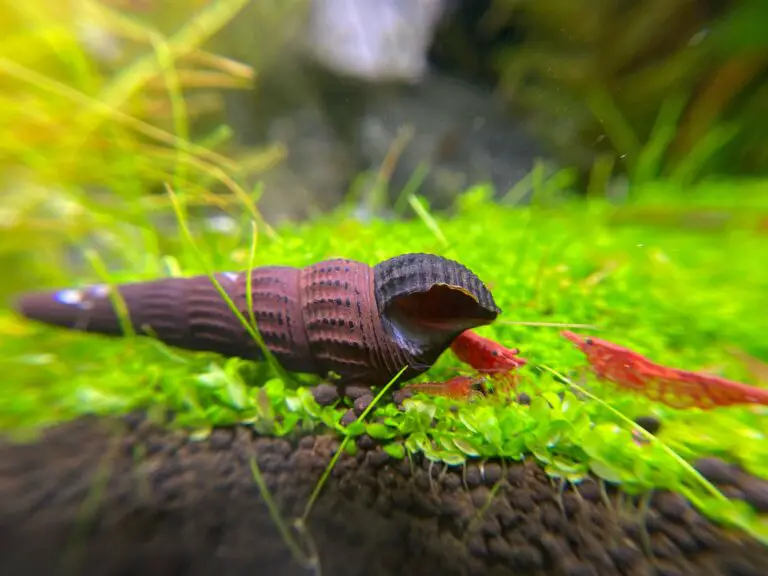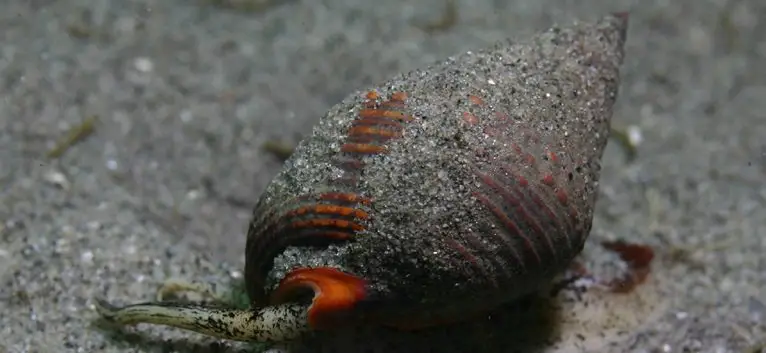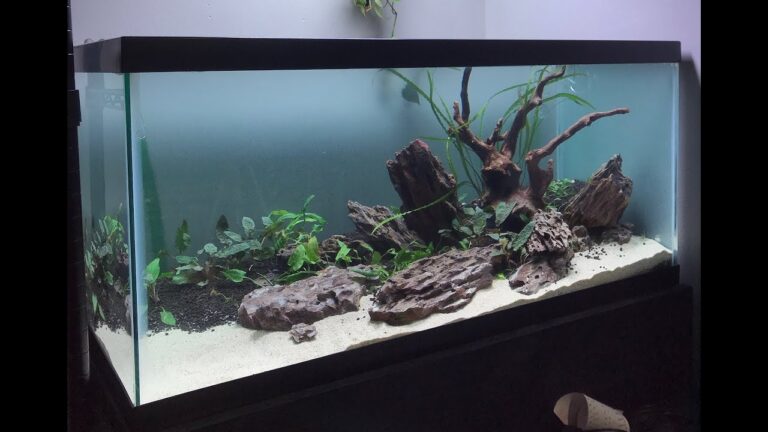How to Clean Moss for Aquarium?
Cleaning moss for an aquarium is relatively simple. To start, gather a container that is larger than the amount of moss you are cleaning. Fill it with water and add any type of conditioner such as Prime or Stress Coat to help remove chlorine or chloramines from the water supply.
Once all of these items have been gathered, place the moss into the container filled with conditioned water and gently swish it around to loosen debris. After about five minutes, pour out the dirty water and refill your container with fresh conditioned water until all dirt has been removed from the moss. Rinse one last time in cold tap-water before placing it in your tank for a beautiful aquarium addition!
- Remove the moss from the aquarium: Carefully remove the moss from your aquarium with a pair of tweezers or net and place it in a clean container
- Rinse the moss: Rinse off any dirt or debris by running cool tap water over it for about one minute, stirring gently with your fingers to ensure that all sides are thoroughly cleaned
- Soak in dechlorinated water: Soak the rinsed moss in dechlorinated water for 10-15 minutes to further loosen any dirt particles that may be stuck to it
- For best results, use an airstone bubbler placed inside of the soaking container to help circulate and oxygenate the water while cleaning
- Agitate with a soft brush: Gently agitate the moss with a soft bristled toothbrush or similar tool, taking care not to tear apart delicate pieces of vegetation as you scrub away any lingering debris on its surface area during this step
- Final rinse: Finally, give your newly cleaned aquarium plant one more thorough rinse under cool tap water before returning it back into your fish tank setup!
Remove Algae from Moss
Removing algae from moss is an important step to keep your plants healthy and free of disease. Algae can grow on the surface of moss, blocking light and inhibiting growth. To remove it, you’ll need to gently brush the affected area with a soft-bristled brush or use tweezers for larger clumps of algae.
Afterward, rinse off the moss with clean water and keep it in a cool location away from direct sunlight, which encourages algal growth.
How to Sanitize Java Moss
Sanitizing your Java Moss is an important part of keeping it healthy and thriving. To do this, you should first rinse the moss in clean water and then soak it in a 10% bleach solution for 15-20 minutes. After that, rinse the moss thoroughly with clean water and let it dry before adding it to your aquarium.
Additionally, make sure to wear gloves when handling the moss as some people may have allergies or sensitivities to chemicals like bleach.
How to Clean Marimo Moss Ball
When cleaning your Marimo Moss Ball, it is important to use warm water and gentle hand-washing soap. Begin by filling a bowl with lukewarm water and adding a few drops of gentle soap or pH-neutral shampoo. Submerge the moss ball in this solution for approximately 10 minutes before rinsing off any remaining soap residue with pure tap water.
Allow the moss ball to dry completely before returning it to its tank or container.
Adding Moss to Aquarium
Adding moss to your aquarium can be a great way to enhance the look and feel of your tank. Moss adds texture, color, and interest that other plants may not provide. It also helps create hiding places for fish, shrimp, or other small creatures in the water.
Additionally, moss can act as an additional source of oxygen to help keep the water healthy and clean. Lastly, adding moss is easy and requires very little maintenance once it’s established.
Brown Algae on Java Moss
Brown algae is a common sight on Java Moss and can be distinguished by its dark brown/black color. It usually appears in areas where light comes in direct contact with the moss, and can easily spread to other parts of your tank if left untreated. To prevent it from spreading, remove any affected growths using tweezers or forceps and increase the water flow around them to prevent further outbreaks.
Additionally, adjust your lighting schedule to provide less bright light during certain times of day so that the moss receives more indirect light throughout the day.
How to Keep Java Moss under Control
Keeping Java Moss under control is essential to ensure that it grows in a neat and orderly fashion. To do this, you should trim your moss regularly with scissors or tweezers to keep it from getting overgrown. Additionally, consider using an aquarium vacuum cleaner every few weeks to remove any debris that may accumulate in the moss.
Make sure to also provide plenty of light and water for the moss as these will help promote healthy growth. Finally, if necessary, add a small amount of liquid fertilizer every month or two to give the moss an extra boost of nutrients.
How to Plant Java Moss in Fish Tank
Java moss is a great way to add some greenery to your fish tank, and it’s relatively easy to plant! First, rinse off the java moss in cold water before adding it into your aquarium. Then attach the moss either on rocks or driftwood using fishing line or thread.
Make sure you secure it firmly so that it won’t move around too much when water currents are present. Finally, wait for about two weeks as the java moss establishes itself – once you see new growth developing, then your fish tank is ready for its newest inhabitant!
Benefits of Java Moss in Aquarium
Java Moss is an incredibly versatile and beneficial plant for your aquarium. It can provide a natural habitat for small fish, as it provides cover from predators and helps reduce stress on the fish. Java Moss also absorbs many of the toxins found in aquariums; this makes it great at reducing nitrate levels, helping to keep the water clean and clear.
Additionally, its long roots help anchor substrate particles together while providing oxygenation to the lower layers of water which helps promote healthy bacteria growth. Finally, its bright green color adds a beautiful aesthetic to any aquarium!

Credit: www.wikihow.com
How Do I Prepare Moss for My Fish Tank?
If you’re looking to add some greenery and a touch of natural beauty to your fish tank, adding moss is the perfect way to do it! Mosses are low-maintenance plants that come in many different varieties; they require minimal care, don’t need much light, and can help keep water clean. Preparing moss for your fish tank requires just a few simple steps.
First, choose the type of moss you’d like to use. There are several types available at pet stores or online – make sure you select one suitable for an aquatic environment. Next, rinse the moss with cool tap water until no dirt remains.
Then place the pieces into a bowl filled with dechlorinated (or distilled) water for about 15 minutes before adding them directly into the aquarium along with any other decorations or plants. You may want to add some gravel under the moss so that it stays in place when placed on rocks or driftwood in your tank. Finally, be sure to monitor pH levels regularly as well as nitrate levels as these will affect how healthy your new addition looks over time!
How Do You Get Algae Out of Moss?
Moss is a great addition to any outdoor space, however when it starts to become overrun with algae, it can be difficult to remove. Fortunately there are some simple steps you can take to get rid of the algae and bring your moss back into its former glory. The first step is to rake away the excess debris that may be harboring the algae growth.
Once this has been done, it’s time for a thorough cleaning! Make sure you use a gentle brush or cloth and warm water with an eco-friendly detergent mixed in. Scrubbing at the affected areas will help dislodge any remaining algae and make them easier to rinse off afterwards.
Finally, once everything has dried out completely, treat your moss with an anti-algae solution such as copper sulfate or hydrogen peroxide which should help prevent further outbreaks in future. With these tips in mind, getting rid of pesky algal patches on your moss should no longer be a problem!
How Do You Clean Aquatic Moss?
Cleaning aquatic moss is important to keep your aquarium healthy and looking its best. It can be done by hand or with the help of a siphon, depending on the type of moss you have and how much debris has built up in it. For manual cleaning, start by taking out any solid pieces of debris that are stuck in the moss.
Then, use a soft-bristled brush to gently remove any dirt or algae from the surface without disturbing the roots. After brushing off all visible dirt, rinse off the moss in clean tank water before returning it to its original location. If using a siphon, place one end into your tank and suck out as much excess debris as possible while holding onto one corner of your moss so it doesn’t get sucked away too!
Finally, if you have chosen to use an anti-algae treatment on your aquascape then now would be a good time to apply this directly onto the affected parts of your aquascape for extra protection against further growths. With regular maintenance such as these simple steps you should find that keeping aquatic moss healthy and looking great is easy!
How Do You Keep Moss Clean?
Keeping moss clean and tidy is an important part of taking care of it. The best way to keep your moss clean is by regularly misting it with a spray bottle filled with water, which will help remove any dust or debris that may have settled on the plant. Additionally, you can use a soft brush such as a paintbrush to gently brush off any dirt or other particles that are stuck in between the leaves.
You should also make sure to keep your moss away from direct sunlight, as too much sun exposure can cause it to dry out and become brittle. Finally, be sure not to overwater your moss – moist but not soggy soil is key for keeping it healthy!
SUPER SIMPLE DIY AQUARIUM VACUUM CLEANER! MOSS TRIMMING HACK!
Conclusion
In conclusion, cleaning moss for aquariums can be a simple and straightforward process if you follow the steps outlined in this blog post. With regular maintenance and care, you can keep your moss healthy and looking great in your tank. Not only will it add beauty to your aquarium, but it also provides a natural habitat for fish that they can swim around in.
Cleaning the moss regularly keeps the water clean and free of debris that could harm aquatic life. Taking proper care of your moss is essential for keeping an attractive aquarium with happy and thriving fish!
